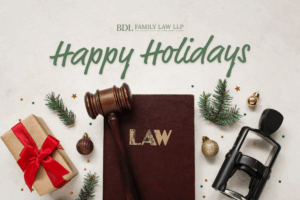Going through a divorce can feel overwhelming, but for many couples in Alberta, an uncontested divorce can help you and your spouse achieve a more peaceful and cost-effective resolution. If you and your spouse are in agreement on key issues, this streamlined process allows you to dissolve your marriage primarily through paperwork, often without setting foot inside a courtroom.
At BDL Family Law, we empower our clients with clear information and practical solutions. This guide is designed to walk you through the uncontested divorce process in Alberta, from your initial agreement to receiving your final divorce decree.
Uncontested Divorce Process Steps: What to Expect
An uncontested divorce means you and your spouse have already settled all major issues arising from your separation. This foundational agreement is the key to a smoother, less stressful, and typically, more affordable divorce process. With everything happening on paper, you can move forward with minimal legal friction.
1. Confirm you qualify for an uncontested divorce
Before you begin, ensure your situation meets Alberta’s requirements:
- Residency: At least one spouse must have lived in Alberta for a minimum of 12 months immediately preceding the divorce filing.
- Grounds for Divorce: The most common ground is living “separate and apart” for one year. This can even include living under the same roof, provided you’ve lived as separate individuals. While adultery or cruelty are also valid grounds, they often introduce complexities into the paperwork.
- Full Agreement: You and your spouse must have reached a complete and mutual agreement on all essential matters: parenting arrangements (custody and access), child support and spousal support. It may also be necessary to have dealt with your property issues.
2. Gather your documents
Once you confirm that you and your spouse are eligible to enter the uncontested divorce process, you’ll need the following documents to support your application:
- Your government-issued marriage certificate.
- If you have dependent children, proof of completion for Alberta’s Parenting After Separation (PAS) course may be required.
- An agreement with respect to parenting, child support and spousal support.
3. Choose your filing method
You have two primary options for filing your divorce application:
- Joint Application: Both spouses sign and file one divorce package together. This method is the most straightforward, as no formal service of documents is required.
- Sole Application: One spouse files the divorce application alone and then formally “serves” the other spouse with the documents. If the served spouse doesn’t respond within the stipulated timeframe, the divorce proceeds as uncontested. This option can be useful if communication is challenging or if one spouse needs to initiate the process.
4. Complete the necessary forms
The Alberta Courts require specific forms to be completed. These typically include:
- The Statement of Claim for Divorce
- A Child Support Data Sheet (if you have dependent children)
- The Request for Divorce
- The Affidavit of Applicant
- A proposed Divorce Judgement
Our attorneys will help you prepare these forms to ensure they’re filled out accurately to avoid your application being rejected by the Court.
5. Documents are filed
Once your documents are prepared and forms are completed, your lawyer will submit your divorce filing to the Alberta Court of King’s Bench on your behalf.
6. Divorce papers are served (sole application only)
While no service is required in a joint application, a sole application requires that the Statement of Claim for Divorce be delivered to the non-filing spouse by someone other than the filing spouse. This can be done by a process server or any other third party. The person who serves the documents will then complete an Affidavit of Service, proving to the court that the non-filing spouse was properly notified.
Once the Statement of Claim for Divorce has been served, there is a waiting period for the non-filing spouse to file a formal response.
- 20 days if they reside in Alberta
- 30 days if they reside elsewhere in Canada
- 60 days if they reside outside of Canada
If no response is filed within this waiting period, the non-filing spouse is considered in default, and the uncontested divorce process continues.
7. Final package is submitted for judicial review
Once the response period has passed, or if it was a joint application, you’ll complete a sworn Affidavit of Applicant and the Request for Divorce, and your lawyer will submit these to the court. A judge will then review all submitted documents, and if everything is in order and complies with Alberta law, they’ll sign your Divorce Judgment.
8. The 31-day appeal period
After the Divorce Judgment is signed, there’s a 31-day appeal window. After this time passes, your divorce is officially finalized, and you’ll be able to request a Certificate of Divorce from the courthouse or registry office.
Make the Uncontested Divorce Process Easier with BDL Family Law
To provide transparency and peace of mind, BDL Family Law LLP offers a flat-rate uncontested divorce service. This package enables you to formalize your uncontested divorce for one transparent price that covers forms, filings, and follow-ups without hourly clocks or hidden fees. You’ll know the full cost of your divorce the moment you hire us, allowing you to budget with confidence.
Our dedicated team can help you at every stage of the process, from drafting and reviewing your separation agreement to preparing and filing forms for judicial review. If you’re ready to start your uncontested divorce process with clarity and confidence, contact us today to schedule an appointment.







